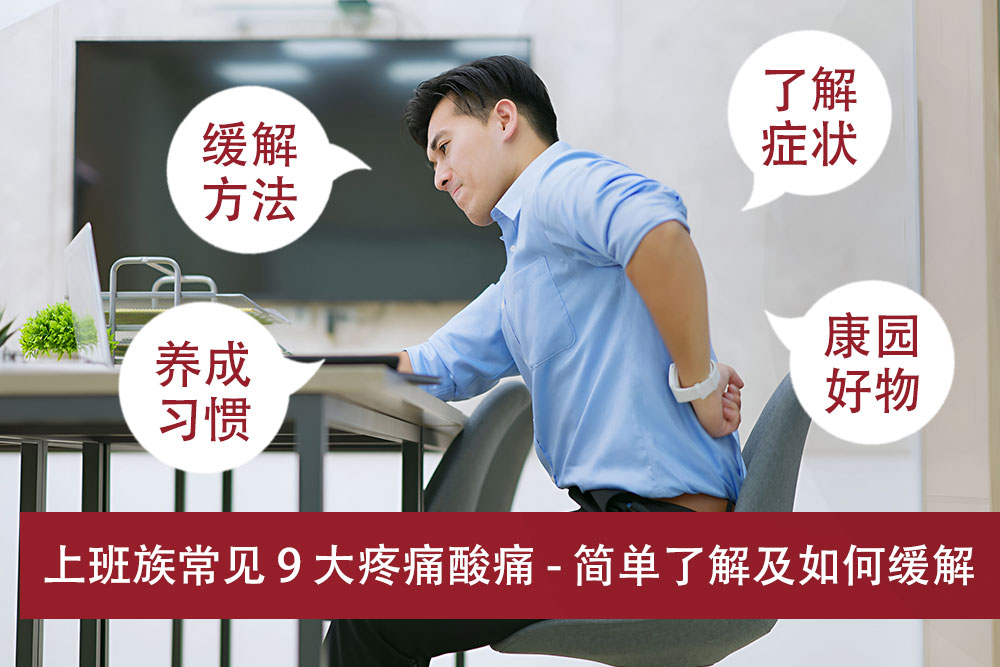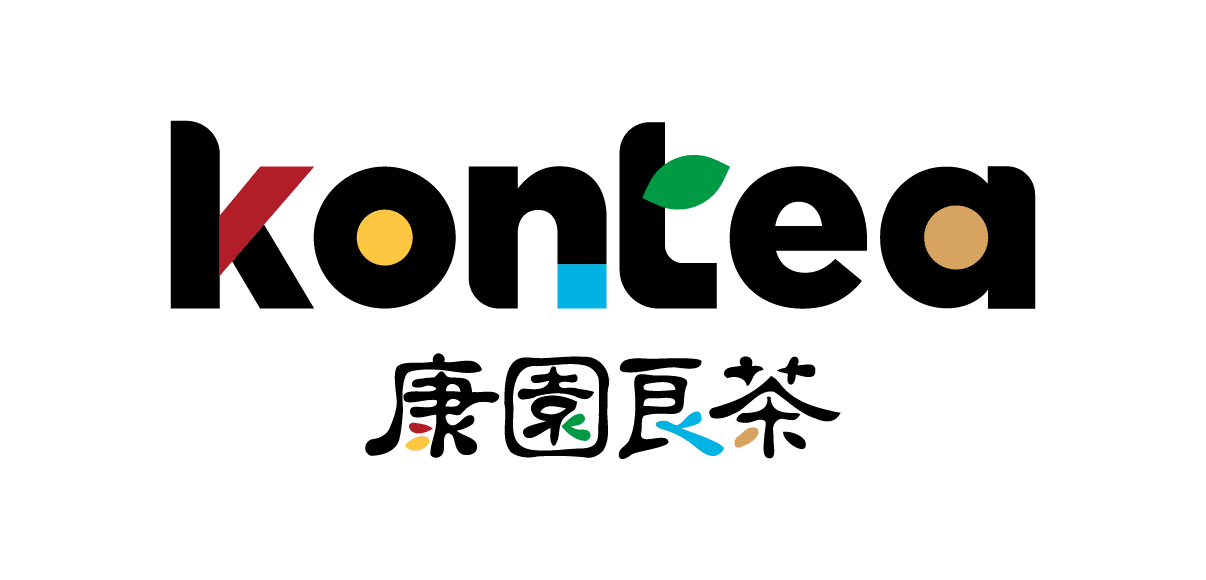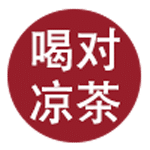Nine Common Pains Among Office Workers – A Simple Understanding and How to Relieve It
In today's high-pressure and fast-paced modern workplace, prolonged desk work and staring at screens have become the daily routine for countless office workers. Along with this comes the "protest" from various parts of the body – lower back pain, neck stiffness, dry eyes... These seemingly minor aches and pains are quietly eroding our health and work efficiency.
Don't let the "minor aches and ailments" of the office become stumbling blocks on your path to health. As an office worker, learning to listen to your body's signals and taking timely countermeasures is crucial. Below, Kang Won TCM practitioner has compiled nine common pain points that trouble office workers, helping you understand their causes and providing simple and practical ways to alleviate them, so that you can take good care of your body even during a busy workday.

Nine Common Pains Among Office Workers – A Simple Understanding and How to Relieve It

Nine Common Pains Among Office Workers: Detailed Understanding and Practical Relief - Alleviating Symptoms like Back Pain
Prolonged working postures and a lack of exercise are common health issues for office workers. Understanding the symptoms of these pains and taking simple measures for relief is crucial.
1. Neck Pain (Cervicalgia): Feeling stiffness and soreness in the neck, limited or painful movement when turning, sometimes radiating to the head causing headaches, or radiating to the shoulders and arms, even with numbness in the fingers.
Practical Relief: Adjust the height of your computer screen to keep your neck naturally straight. Every hour, slowly rotate your neck forward and backward, and left and right. Apply a hot towel or hot water bottle to your neck to relax the muscles.
2. Wrist Pain: Soreness and swelling in the wrist, increased pain during movement, sometimes feeling numb or tingling, especially after using a mouse or keyboard. May feel weakness in the hand, affecting the ability to lift and grip objects.
Practical Relief: Use ergonomic mice and keyboards, and pair them with wrist rests. Avoid excessive bending or extension of the wrist. Take breaks during work to perform wrist rotations and clenching exercises.
3. Finger Pain: Pain and stiffness in the finger joints, feeling inflexible during movement, especially in the morning or after prolonged stillness. May be caused by prolonged scrolling on phone screens or typing.
Practical Relief: Avoid prolonged repetitive finger movements. Alternate hands when using your phone. Perform simple finger stretching and clenching exercises. Soak or apply warmth to your fingers with warm water.
4. Finger Pain: Pain and stiffness in the finger joints, feeling inflexible during movement, especially in the morning or after prolonged stillness. May be caused by prolonged scrolling on phone screens or typing.
Practical Relief: Avoid prolonged repetitive finger movements. Alternate hands when using your phone. Perform simple finger stretching and clenching exercises. Soak or apply warmth to your fingers with warm water.
5. Lower Back Pain (Lumbalgia): Soreness and pain in the lower back, which can be dull or sharp, possibly caused by prolonged sitting, poor posture, or lack of exercise. Sometimes the pain radiates down to the buttocks or legs.
Practical Relief: Avoid prolonged repetitive finger movements. Alternate hands when using your phone. Perform simple finger stretching and clenching exercises. Soak or apply warmth to your fingers with warm water.Choose a chair with lumbar support and keep your lower back straight. Get up and move around every half hour, performing lower back stretching exercises. Strengthen your lower back muscles with exercises like planks.
6. Shoulder Pain: Soreness and stiffness in the shoulders, limited or painful movement, such as when raising your arms or rotating your shoulders. Easily triggered by maintaining the same sitting posture for a long time.
Practical Relief: Avoid maintaining the same posture for long periods; move your shoulders regularly, such as shrugging and rotating them. Apply a hot towel or hot water bottle to your shoulders. Perform shoulder stretching exercises.
7. Leg Pain: Feeling soreness, heaviness, and weakness in the legs, with symptoms worsening after prolonged sitting or standing. May be accompanied by calf cramps or mild swelling.
Practical Relief: Get up and walk around or do simple leg exercises like calf raises and foot flexes every so often. Elevate your legs when resting. Massage your calf and thigh muscles.
8. Headache: Feeling a throbbing, dull, or pulsating pain in the head, possibly caused by work stress, lack of sleep, or prolonged eye strain.
Practical Relief: Keep your work environment well-ventilated. Ensure you get enough sleep. Try head massages, such as pressing your temples. Relax and relieve stress.
9. Buttock Pain: Soreness or a feeling of pressure in the buttocks after prolonged sitting, sometimes radiating down the back of the thighs.
Practical Relief: Avoid prolonged sitting; get up and move around every so often. Try buttock stretching exercises, such as glute bridges. Use a suitable cushion to reduce pressure on your buttocks.
Prolonged Sitting: A "Chronic Poison" - Seven Major Health Crises Not to Be Ignored
The latest research further confirms that the negative health effects of prolonged sitting are
- Weight Steadily Increasing:
Overweight and Obesity Sedentary behavior leads to reduced energy expenditure, and excess energy is converted into fat accumulation. Over the long term, weight will naturally increase significantly, raising the risk of obesity. - Heart Overburdened:
Cardiovascular Issues Prolonged sitting reduces cardiovascular function and increases the risk of cardiovascular diseases such as high blood pressure and high cholesterol. Lack of exercise weakens the heart's pumping ability and reduces blood vessel elasticity. - Muscle Loss, Fragile Bones:
Muscle Atrophy and Osteoporosis Prolonged inactivity leads to a decline in muscle strength, especially in the lower limbs and back. Bones also become fragile due to a lack of weight-bearing stimulation, increasing the risk of osteoporosis. - Spinal Deformation:
Neck and Lumbar Spine Problems This is closely related to the cervical spondylosis and lumbar disc herniation mentioned earlier. The pressure of prolonged poor sitting posture on the spine causes irreversible damage. - Obstructed Blood Circulation:
Deep Vein Thrombosis Prolonged sitting slows down blood circulation in the lower limbs, increasing the risk of deep vein thrombosis. In severe cases, it can lead to life-threatening conditions such as pulmonary embolism. - Metabolic Syndrome:
Metabolic Issues Prolonged sitting is closely associated with metabolic problems such as insulin resistance, high blood sugar, and high blood lipids, increasing the risk of developing type 2 diabetes and metabolic syndrome. - Shadow Over the Mind:
Mental Health Issues Lack of exercise and social interaction, coupled with work stress, can easily lead to mental health problems such as anxiety and depression. Physical discomfort can further exacerbate the psychological burden.
Taking the Initiative, Moving from "Sitting" to "Well-being": Cultivating Healthy "Back-Saving" Work Habits for Office Workers
Faced with the numerous health crises brought about by the "static" world of the office, white-collar workers must not passively endure them, but rather actively take action. From daily life to work habits, a comprehensive "self-rescue" is necessary to ultimately achieve a transformation from "prolonged sitting harms the body" to "healthy working."
1. Get the Body Moving, Say Goodbye to the "Glued-to-the-Chair" Habit:
Exercise is the best antidote to the dangers of prolonged sitting. We must not only ensure at least 30 minutes of moderate-intensity aerobic exercise daily, such as brisk walking, jogging, swimming, or cycling, but also integrate the concept of "movement" into work breaks. Every 30-60 minutes, get up and move for 5-10 minutes, performing simple standing stretches, walking around, or gentle exercises targeting the neck, shoulders, and lower back. Consider introducing standing desks or alternating between sitting and standing postures at work to prevent the body from remaining static for long periods. Take advantage of lunchtime for walks and even incorporate taking the stairs instead of the elevator into your daily routine.
In addition, we can cleverly use acupressure to relieve shoulder and neck discomfort caused by prolonged sitting:
- Relieve Cervical Spine Pressure and Dizziness:Wind Pool Point (风池穴).** The Wind Pool point is located in the hollows on both sides of the nape of the neck below the base of the skull, between the two large neck muscles. During work breaks, use your thumbs to press and rub the Wind Pool points for about a minute, which can effectively relieve dizziness and other symptoms caused by cervical spine pressure and relax neck muscles.
- Relieve Shoulder and Arm Soreness:Elbow Bend Point (曲池穴).** The Elbow Bend point is located at the outer end of the elbow crease, at the midpoint of the line connecting the Chi Ze point (尺泽穴) and the lateral epicondyle of the humerus when the elbow is flexed, which is the depression at the bend of the elbow joint. Regularly massaging the Elbow Bend point can effectively relieve shoulder and arm soreness caused by prolonged work.
- Relieve Headaches and Eye Strain:Joining Valley Point (合谷穴).** To find the Joining Valley point, align the transverse crease of the first joint of one hand's thumb with the web margin of the other hand, then press down with the thumb. The point where the tip of the thumb points is the Joining Valley point. When you feel headaches or eye strain caused by prolonged sitting in the office, massaging the Joining Valley point can help relieve these discomforts.
2. "Add Fuel" for Health, Choose Healthy "Energy Boosters":
A reasonable diet is the cornerstone of physical health and the key to combating metabolic problems caused by prolonged sitting. We must not only focus on a balanced daily diet, consuming more fresh fruits and vegetables rich in vitamins, minerals, and dietary fiber, choosing whole grains and healthy protein sources, and limiting processed foods high in sugar, fat, and salt, but also make wise choices for "energy boosters" during work. Avoid over-relying on unhealthy snacks and drinks; bring your own healthy snacks such as fruits, nuts, and yogurt to maintain stable blood sugar and energy levels. At the same time, maintain sufficient water intake to promote the body's metabolism.
3. "Recharge" with Sleep, Maintain an Upright "Working Posture":
Sufficient and high-quality sleep is crucial for the body's repair, while good working posture is an effective way to prevent neck and lower back problems. Try to ensure 7-8 hours of sleep each day and establish regular sleep habits to fully "recharge" your body. At work, constantly remind yourself to maintain correct sitting posture: back straight, lumbar support, feet flat on the floor, knees and hips at a 90-degree angle, eyes level with the computer screen, with the top of the screen slightly level with or slightly below eye level.
4. Protect Bright "Vision," Create a Healthy Working Environment:
Facing the computer screen for long periods is the norm for office workers, making vision protection crucial. Follow the "20-20-20" rule, pay attention to eye hygiene, and avoid prolonged continuous eye use. Adjust screen brightness and maintain a suitable viewing distance. At the same time, creating a healthy working environment is equally important. Keep the office well-ventilated, ensure sufficient lighting, and reduce the adverse effects of environmental factors on the eyes and overall health.
5. Regularly "Check Up" the Body, Integrate Exercise into "Work Breaks":
Regular comprehensive health check-ups can help you understand your health status in a timely manner and detect potential health risks early. In addition to regular check-ups, actively integrate exercise into work breaks. Utilize fragmented time for simple workplace exercises to relieve tense muscles and promote blood circulation.
6. Learn to "Unwind" the Mind, Maintain a Positive Attitude:
Work pressure is a common challenge faced by modern office workers, and long-term mental stress can also have negative effects on physical health. Learn to relax your body and mind and relieve stress through meditation, yoga, listening to music, reading, and communicating with friends, maintaining a positive and optimistic attitude. A positive attitude can not only improve work efficiency but also promote physical and mental health.
Through these integrated strategies, office workers can more systematically integrate health concepts into work and life, shifting from passive endurance to active change, ultimately achieving a transformation from "prolonged sitting harms the body" to "healthy working."
Kontea Recommendation Products
Feeling like your body's been hollowed out? Kang Won TCM practitioner has specially formulated ready-to-eat nourishing stews. Carefully selected premium tonifying ingredients are simmered according to traditional TCM principles. With simple heating, you can quickly replenish the vital energy you need, nourishing your body and mind anytime, anywhere, leaving you full of vigor!

Coconut Chicken Soup
Effects: Matured coconut, cordyceps flower, bamboo mushroom, Codonopsis pilosula (Dang Shen)⋯
Suitable for: Low energy or fatigued individuals; dehydration, poor appetite.

Sea Coconut Soup
Effects: Sea coconut highly benefits the lungs and throat. It strengthens the lungs to treat dryness which results in chronic cough. Through strengthening the lungs, it can also reduce phlegm. Paired with a fig, the soup also benefits the spleen, digestive system and relaxes the bowel
Suitable for: Cough, sore throat, phlegm, dry throat.

Anxiety Relief Soup
Effects: Ladybells can nourish the lungs and soothe inflammation. Figs are great for clearing heat, and is especially effective against symptoms like dryness in the mouth when used in a stew.
Suitable for: People who are anxious, upset, and have difficulty sleeping. People who have dry mouths and tongues, as well as those with dry coughs, can treat their symptoms with this soup as well.

Wolfberry Soup
Effects: Straining the eye also strains the liver. When it comes to protecting the eyes, the best is prinsepia, and next is wolfberry. Prinsepia can dissipate internal, remove dampness, and is kind to the liver. Wolfberries promotes clear vision, perks up the mood, nourishes the liver, and allows down ageing.
Suitable for: People who are experiencing poor vision and eyesight. Great for people who looks at electronic devices for long periods at a time.

Revitalising Soup
Effects: Codonopsis pilosula (Dang Shen) is a traditional tonic used to strengthen the spleen and lungs. Adding in Huang Qi, which improves immunity and slows ageing, as well as wolfberries and red dates, which enrich blood cells, makes this soup great for calming the soul and fighting fatigu
Suitable for: People who are easily fatigued, easily tired after activity, and susceptible to catching fevers.

Ginseng Root Soup
Effects: Ginseng root has cooling properties and promotes the secretion of body fluid. Combined with mondo grass, which nourishes the lungs and relieves coughing and phlegm, as well as heat-relieving chrysanthemum, this soup is the ultimate heat-soothing medicinal food.
Suitable for: People suffering from heat. It can also soothe core throat, pain and swelling in the head, as well as dryness in the mouth.

Black Bean Soup
Effects: People of the modern era are under heavy stress; their bodies are getting frail and they need to start taking care of their liver in order to focus and improve their health. Eucommia and black beans are great for the kidney, energy, and bone and nerve strength, and Gordon Euryale seeds are great for removing dampness in the spleen as well.
Suitable for: Recommended for people with frequent lower body pains and urination in the middle of the night. If you experience leucorrhoea (whitish or yellowish discharge), it may be caused by excessive internal dampness, and it is recommended to include this into your diet.

Ginseng Soup
Effects:Ginseng promotes strength in the Chi, lungs, and spleen, and can fight against fatigue, increases metabolism and helps with the immune system, as well as slows down ageing. Chinese yam is often called “natural ginseng”, as it also nourishes the lungs and spleen, and together with Polygonatum Odoratum, promotes healthy and optimal organ function.
Suitable for:Frail-bodied patients recovering from a big disease or treatment, bad appetite, and profusely sweating people.
Faced with the various aches and discomforts brought about by work, we should not choose to endure them, but rather actively take countermeasures. Moreover, alleviating pain for office workers is not something that can be achieved overnight; it requires us to persistently integrate healthy habits into our daily work and lives. From maintaining correct posture to regular work breaks and appropriate exercise, every small act of perseverance will accumulate into a wealth of health. Let us work together to say goodbye to pain and embrace a healthy way of working.
Kang Won Herbalist
Kang Won TCM Practitioner also recommends seeking medical attention as soon as rheumatic symptoms begin to appear. Early consultation allows us to provide you with suitable treatment and prevention plans based on your symptoms and underlying causes.
Our TCM Practitioner specializes in diagnosing and treating various internal health issues in the internal medicine field. We are dedicated to balancing the body's energy flow to alleviate internal problems and improve overall health. Therefore, if you have any concerns about rheumatic diseases, we welcome you to consult with us in person to learn more.
Feel The Teaference
Kontea Products
Professional Service
TCM Services
Graduated from Nanjing University of Chinese Medicine in China, we are licensed Chinese medicine practitioners who provides professional Chinese medicine services. We approach each patient's case from their perspective, attentively listening and analyzing their physical condition.
